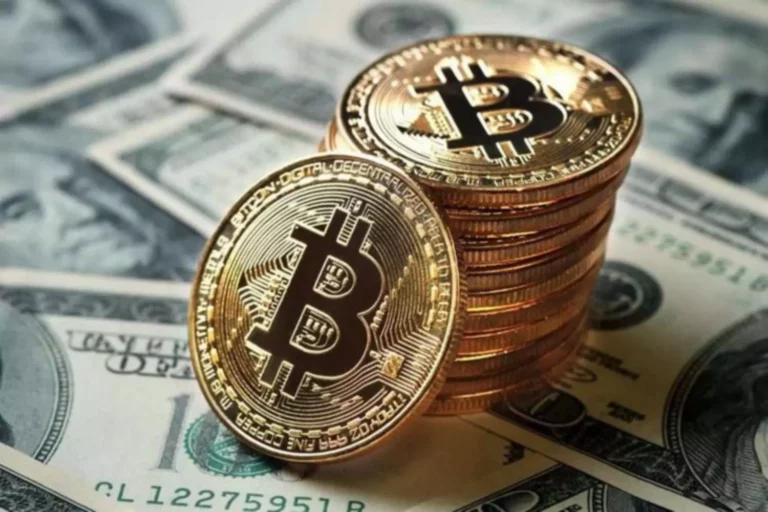Content
A classic example is PayPal, a widely recognized payment gateway that enables individuals and businesses to send and receive money. They facilitate the acceptance of https://www.xcritical.com/ various payment methods, including credit and debit cards, digital wallets, and more. Additionally, payment gateways streamline the payment process, reducing the risk of errors and improving overall efficiency.
SEC Revives Payment for Order Flow Debate
The SEC’s proposal attempts to create this world by mandating that retail orders be exposed to order-by-order competition. The form of this exposure prohibits internal execution of a retail order by a wholesaler until after the order has been sent to a “qualified auction” that is accessible to all payment for order flow market participants. The wholesaler or broker submitting the order has to be identified to everyone, or not knowable to anyone. The order side, size, a specified limit price and other basic info must be disseminated ahead of the auction to alert would-be participants. Our goal is to help empower you with the knowledge you need to trade in the markets effectively.
- 9 Authority for the Financial Markets (2022), ‘Assessing the quality of executions on trading venues’, January.
- Reputable gateways employ encryption and fraud detection systems to ensure that personal and financial data remains safe.
- Investment firms operating in multiple jurisdictions will then only be able to receive payments in connection with transactions of clients domiciled or established in a Member State that have made use of the grandfathering rule.
- The higher the risk that they perceive, the less willing they will be to provide liquidity, or the higher the cost will be at which they will be willing to provide liquidity.
- Broker-dealers must disclose the nature of any compensation received in return for routing orders, as well as the overall process they use for order routing decisions.
Broker-Dealer Types: Fully Disclosed vs Omnibus vs Self-Clearing
In a payment for order flow model, the brokerage then routes that order to a third party known as a market maker, not directly to a public exchange. These third Ethereum parties then decide on which public exchange to send the order to for execution. Lastly, there’s no arguing that payment for order flow results in customers getting better prices than displayed by the NBBO. Theoretically, market makers are offering the best price available for retail investors. Whether or not that’s actually the case (all the time) is the biggest source of criticism. Investments in Bonds are subject to various risks including risks related to interest rates, credit quality, market valuations, liquidity, prepayments, early redemption, corporate events, tax ramifications and other factors.
Criticisms of payment for order flow

When a customer makes a purchase online, the payment gateway captures the payment information and encrypts it using advanced security protocols. The encrypted data is then transmitted to the customer’s bank for verification and authorization. Once the payment is authorized, the payment gateway sends a confirmation message to the merchant, and the transaction is completed. Numerous payment gateway providers exist, each offering its own set of features and services. These providers offer diverse solutions, catering to the specific needs and preferences of businesses. These systems employ advanced encryption techniques to safeguard sensitive customer information.
By converting a portion of your assets into a guaranteed income stream, you can mitigate the fear of running out of money in later years. This ensures that you can maintain your desired standard of living throughout your retirement, without worrying about financial constraints. Immediate Payment Annuities are a type of annuity that starts paying out income immediately after the initial investment is made.

Newer brokerages like Public are doing away with PFOF altogether, and maintaining quality-price execution without routing to market makers. Learning the mechanisms of the market can help avoid a world of hurt, and offer some peace of mind. When retail investors place orders through their brokers, many of these go through a process known as PFOF. In doing so, brokers effectively sell these orders for a fee to heavyweight market makers such as Citadel Securities or Virtu Financial.
Payment for order flow is regulated by the securities and Exchange commission (SEC). Broker-dealers are required to disclose the amount of payment they receive for directing orders to market makers, and are also required to seek the best possible execution for their clients’ orders. Additionally, market makers are required to provide price improvement for orders they receive from broker-dealers. Market makers can offer a better price compared to on-exchange trading, allowing brokers to fulfil their fiduciary duty to get the best price for their clients.
The SEC has also implemented rules that require brokers to report their Payment for Order Flow practices to the public. To understand how these arrangements rose to prominence, it helps to go back to early 2020, when pandemic lockdowns were fueling waves of activity from retail investors. Alongside the rise of retail trading was a contemporaneous boom in trading apps giving easier and cheaper access to markets. Leveling the playing field for retail investors is an issue that’s finally starting to galvanize European lawmakers. Authorities have recently turned their attention to regulating payment-for-order-flow (PFOF), with European lawmakers debating ways to limit or ban the practice as part of the Markets in Financial Instruments Regulation (MiFIR).

They provide mobile-responsive interfaces, in-app payment options, and QR code scanning for quick and convenient transactions. Square, known for its mobile payment solutions, has made it incredibly easy for businesses to accept payments on the go. E-commerce has taken the business world by storm, and payment gateways are at the forefront of this transformation. They make it possible for consumers to shop from the comfort of their homes, and for businesses to expand their reach globally.
This flexibility in payment options enhances the customer experience and expands the potential customer base for merchants. A payment gateway is a technology that acts as a mediator between an online store and a financial institution, securely transmitting transaction data between the two parties. Its primary purpose is to authorize and process payments made by customers, ensuring the funds are transferred from the buyer’s account to the merchant’s account. XYZ Company, an online retailer, experienced a significant increase in sales after integrating a payment gateway that supported multiple payment methods and currencies.
Most market makers therefore have risk models around how imbalanced they allow their positions to be. A market maker will buy your 273 shares instantly, hoping to find a buyer in the immediate future. Your sell order is filled immediately at a price that is at – but often better than – the best available price anywhere else in the market. If anything, market makers often are “backrunning”—they fill an order at a price better than the best market price, but then have to scramble to identify an actual buyer or seller later to manage their own risk. Options.Options trading entails significant risk and is not suitable for all investors.
One option is to send the order to an exchange, where it will be matched with another buyer or seller. Another option is to send the order to a market maker, who will execute the trade themselves. If the broker chooses to send the order to a market maker, they will receive a fee in exchange for the order. Payment for Order Flow is when a broker sells their clients’ orders to market makers in exchange for a fee. Market makers are firms that specialize in buying and selling securities, and they make money by pocketing the difference between the buy and sell price of a security. When a broker sells their clients’ orders to market makers, they are essentially giving up the opportunity for their clients to get the best price for their trade in exchange for a fee.
Payment for order flow is a practice where market makers pay broker-dealers to direct their clients’ orders to them. This means that when a client places an order, the broker-dealer can choose to execute it on an exchange or direct it to a market maker, who will then execute the trade. The market maker pays the broker-dealer a fee for each order they send their way.


